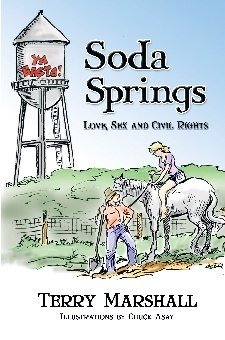|
Soda Springs Synopsis
|
An excerpt from Soda Springs
Soda Springs in '63:
Flor views the barrio
They drove the dirt streets east of Main, four blocks by six, abutting the railroad tracks. The houses were crumbling adobe or flaking clapboard, tiny as summer cabins. Waist-high weeds overran empty lots and dirt front yards. Broken glass and rusted car bodies littered the place.
Flor recalled one squat whitewashed home trimmed in turquoise, its miniature lawn as manicured as a golf green. Roses and hollyhocks splashed its white picket fence with yellows and reds. This lone cheery home accentuated the fact that Mexican Soda Springs was a shabby slum.
Bobby’s parishioners called the Mexican enclave Beanville, or simply “over there.” No whites lived there. Only those with a pressing reason dared enter: police chief Zeigler, Doc Milard, volunteer firemen, an occasional road crew.
Flor had analyzed the 1960 Census: 932 Mexicans, fifty-eight percent of the town’s population, crowded like Third World refugees into twenty percent of the town’s land.
On the United Methodist side of Main, 675 whites lived in thirty blocks of bungalows and brick Queen Anne and Victorian homes with trees, shrubs, flowers, and grassy lawns, girded by sidewalks and paved streets.
No Mexicans lived west of Main.
-- Soda Springs, Chapter 6






